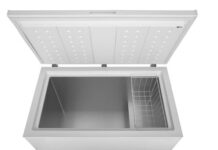Today’s digital economy is characterized by multiple product lines, integrated systems, and collaborative work environments to meet the ever-rising customer expectations. This demands a streamlined organization of processes, technology, and workforce. Enterprise architecture is one such approach that organizations use to design their operations end-to-end to achieve product excellence and ultimately improve customer experience.
With so many technological inventions, organizations need individuals capable of designing streamlined IT architectures that can help the business explore emerging technologies and new market opportunities while also reacting fast to operational and customer issues. The IT professional behind designing IT architecture, be it the enterprise architect, systems developers, or other technical leads, in addition to acquiring the TOGAF Certification, should also demonstrate their knowledge and ability to simplify complex technologies and processes to keep the entire organization operations streamlined and on one page.
What is TOGAF?
Enterprise architecture (EA) is the field involved with planning and organizing the processes, technology, and people of an organization holistically into an infrastructure that supports business goals. EA not only facilitates the effective management and maintenance of IT infrastructure but also supports the organization’s digital operations enabling it to scale easily both horizontally and vertically in response to the future growth of the business. Also, enterprise architecture is important as it enables the organization to be in full control of its digital assets and navigate complex operations. Yet, architecture design, particularly for heterogeneous architectures with multiple vendors, can be a complex process. This is where TOGAF comes in handy.
TOGAF (The Open Group Architecture Framework) is an enterprise architecture framework that is intended to help define business goals that are aligned with enterprise development objectives to enhance business efficiency. It is used to design, plan, implement, and manage enterprise IT architecture.
TOGAF was first developed and used in 1995 as a Technical Architecture Framework for Information Management by the United States Department of Defence (DoD). This framework has since seen several revisions by the Open Group Architecture Forum with each version representing an improvement of its predecessor. The current TOGAF 9.2 version comprises seven sections and 52 chapters in its library along with a description of terms, definitions, and abbreviations.
TOGAF comes with immense benefits.
- TOGAF helps organizations to design and implement software in a standardized way that is focused on meeting business objectives
- It helps to create standards and best practices for IT that can be replicated with minimal errors and consistency.
- TOGAF helps put everyone in the organization on the same page by simplifying IT architecture and workflow in a way that can be understood by all.
The Structure of the TOGAF Document
TOGAF standards and best practices are outlined in an extensive document that describes how IT practitioners should implement the framework in their operations. While the TOGAF framework can be adapted to work as a whole, it is very flexible allowing organizations to customize it and/or adopt only the parts of the framework that are relevant. Also, TOGAF is compatible with other frameworks and architectures.
The latest TOGAF version is divided into seven main sections. These are
- Part I – Introduction
Part one of the TOGAF libraries broadly outlines the fundamental principles and concepts of enterprise architecture in general and TOGAF in specific.
- Part II – Architecture Development Method (ADM)
Part II of the TOGAF documentation is perhaps the most important part of the framework that explains the step-by-step process of developing enterprise architecture.
- Part III – ADM Guidelines and Techniques
This section is a collection of the guidelines, resources, techniques that support the implementation of ADM concepts and principles such as iteration and architecture security.
- Part IV – Architecture Content Framework
The content frameworks provide a structured metamodel for enterprise architecture that gives an overview of architecture deliverables, architectural artifacts, and building blocks.
- Part V – Enterprise Continuum and Tools
Part III of the TOGAF framework library, the Enterprise Continuum, is a repository of the assets available to an organization internally and externally. This includes architecture descriptions, building blocks, models, patterns, and other artifacts. Organizations use these assets in the design and development of enterprise architecture.
- Part VI – Architecture Capability Framework
This section includes reference materials used to organize processes, roles, and skills required to establish an architectural framework with the capabilities to run an organization’s core architecture function.
- Part VII – Resources
Resources are the methods, tools, guidelines, and various techniques that can be used to plan, implement and maintain TOGAF and TOGAF ADM. Also, resourceful is the TOGAF library which contains information, templates, patterns, and other materials to be used as a reference for the development of new enterprise architecture using TOGAF standards.
TOGAF core concepts
TOGAF supports different types of architectures. These are categorized into four main types of architectures including
1. Business Architecture
Also known as the business process architecture, business architecture focuses on business organization, strategy, governance, and processes. This starts by creating an Architectural Vision document that describes both the current status of business processes and expected capabilities that will enable the achievement of planned business goals to deliver higher value.
2. Data Architecture
The data architecture supports the structuring of logical and physical data assets of an organization as well as other data management resources. Provides the guidelines for the development and deployment of applications that the business requires to achieve its goals which are outlined in the Architectural Vision.
3. Application Architecture
This architecture provides the guidelines and platform for the design, development, and deployment of single applications and their integration with other business systems, applications, and processes.
4. Technology Architecture
This architecture supports the development and implementation of software needed by the organization to support the management of business data, processes, and application services. Examples of technology architecture include networks, standards and best practices, IT infrastructure, and more.
Why do organizations need TOGAF?
TOGAF is a unique and one of the most widely adopted enterprise architecture frameworks across the globe. The greatest advantage presented by TOGAF is that all its design activities are focused on meeting business needs. The TOGAF framework is used to ensure that organizations establish consistent standards, communication channels, and methods for their IT infrastructure. Businesses are today, in a bid to enhance efficiency in their processes, are shifting away from closed source software to open systems that allow them greater flexibility and customization. They need a framework that will help them plan, design, and implement an enterprise architecture that supports the development, deployment, and maintenance of core applications. TOGAF offers all this and much more.











